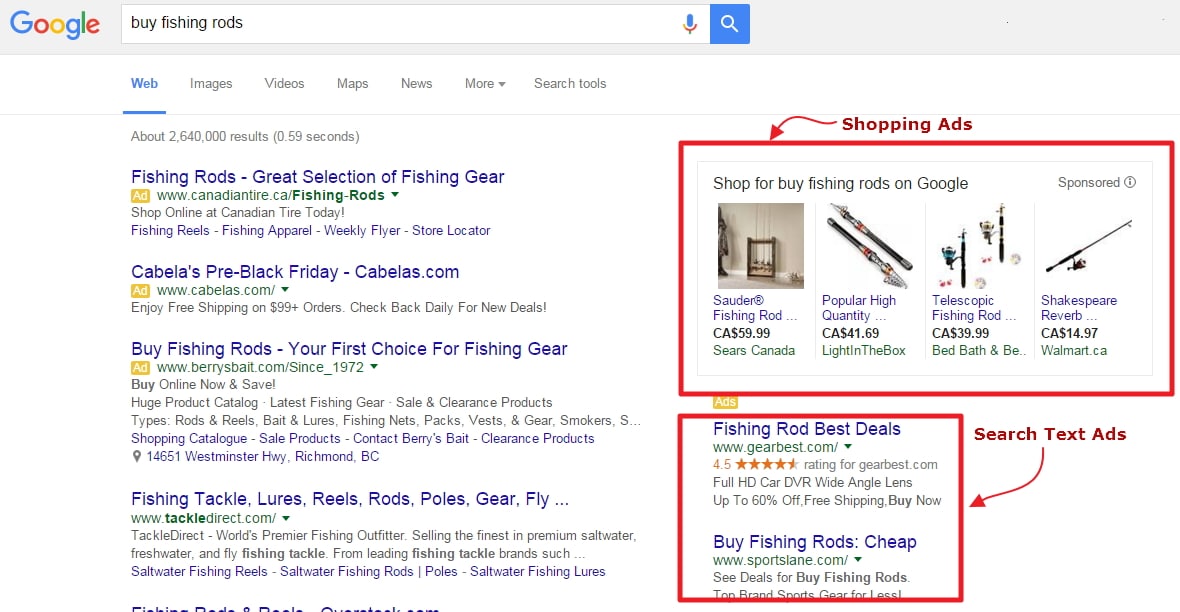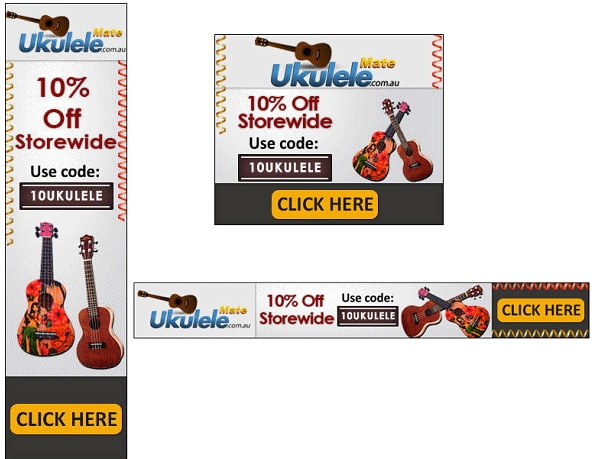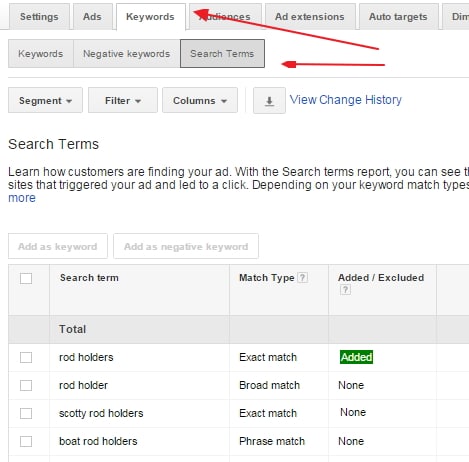How to Get More Sales of Your Private Label Products with AdWords
In a recent Blog post I chronicled how I erroneously wasted $1500 on a Google Adwords Express ad campaign. But Adwords Express aside, the real deal Adwords is an extremely powerful advertising platform. Third party channels aside, Adwords is easily my company's biggest advertising expenditure each month. After ensuring your products are listed on Amazon, setting up a Google Adwords account is probably the most important thing you can do if selling your products online.
Is Google Adwords Right for You?
It's important to understand how people find your products. If you're private labeling products, the chances are that you are sourcing a product that already has consumer demand. Examples would be products like fishing rod holders or cutting boards. In other words, people are actually searching for your products. This isn't true for all products, especially new and novel products. Think of the increasingly popular “hoverboards” (miniature Segways): before recently, only Back to the Future nerds would be searching for such a thing. I know of a couple of people running novelty T-Shirt companies and they run into the same problem: people don't know they want a “My Cocker Spaniel is smarter than your Honour Student” T-Shirt until they see it.
If people aren't searching for your product, then it's both very difficult and very expensive to target them. Sure, if you're a novelty T-Shirt company you can target broad words like “buy t-shirts online” but you will have a very low conversion rate meaning it takes more clicks, and more money, to convert users. The more specific terms people are using to search for your products, i.e. “clamp on fishing rod holder” the higher your conversion rate will be; the less specific, i.e. “fishing rod holder” the lower your conversion rate will be. As an aside, this is also why targetability should be a consideration when you're sourcing your products.
Google Keyword Planner is the easiest way to determine how many people are searching Google for a particular item. There's other apps like MerchantWords (for Amazon searches) and WordTracker (for longer tail search phrases), but Google Keyword Planner is by and far the most important. In general, I like for there to be 500 or more monthly searches on Google Keyword Planner for terms that are exact matches to my product or close matches to my product, i.e. clamp on rod holders for boat and clamp on rod holders (see below). A highly specific search term to my product should yield a 2-5%+ conversion rate on Adwords.
Types of Advertising on Google
Google is a monster of an advertising platform with a lot of advertising options including plain Jane search ads, video ads, display (banner) ads, and more. Here's the most common options, ranked in order of value (at least in my experience):
Google Shopping Ads <Most Important>
Search Ads (i.e. the text ads you see when searching on Google) <Second Most Important>
Remarketing Ads <Optional>
Display Ads (i.e. banners) <Optional and Caution>
YouTube Ads <Optional and Caution>
Google Shopping Ads are the Best Bang for Buck

Many ecommerce store owners will reminisce of the days when the cost to advertise for search text ads on Google Adwords was a fraction of what it was today. The cost of text ads has in fact risen considerably over the years. Most official estimates say that costs have risen around 5-12% per year (although in my experience it's been a much steeper increase than this). But rejoice as there's still one type of Google advertising that is ridiculously cheap: Google Shopping Ads.
Google Shopping Ads are simply product ads. When you search for something like “Buy Fishing Rods”, Google will give you regular text ads along with a selection of actual product ads which include things like thumbnail pictures of the product and prices. The ROI on Shopping Ads for most advertisers, especially private labelers, will be significantly higher than any other form of advertising on Adwords. In fact, the cost of conversion for Google Shopping Ads for my company is about 1/3 the cost of Google Search text ads.

If you're planning to use Adwords, the first thing you should do is to setup your Google Shopping Ads. Unless you have a product with extremely little profit (under $5) I would suggest setting up Shopping Ads for every product you have.
I won't go over the step by step instructions to setting up your Shopping Ads as there's a ton of websites out there that do this. But keep in mind that setting up Google Shopping Ads is (in very atypical Google fashion) a confusing two step process. First you must sign up for a Google Merchant Center account and add a shopping feed containing basic information of all your products (this is a tab delimited file containing basic information about your products such as price, image links, and URLs). You can manually compile your feed or use software which integrates with your shopping cart. See a sample shopping feed here. Second, within the Google Adwords Dashboard you create a new Shopping campaign and link it to your Merchant Feed you setup in step one. After this, you're good to go. Unlike search ads, there's no need to target search terms as Google does this for you. It's very hands off management which is another part of its appeal.
Google Search Ads
Google Search Ads, as mentioned, are not quite the great deal they once were. In fact, for this post I looked at the cost per conversion over the last 3 years for our Adwords account and I was surprised by the trends.
Our Three-Year Search Cost Per Conversion
2013:$22.78
2014: $37.87
2015: $49.91
Our Google Shopping Ads was pulling our overall cost per conversion way down (to around $28) the past couple of years and I was blind to how poorly our search ads were performing.
Clearly we need to refine our ads and tighten our keywords, but regardless of the uptrend in Adwords cost, it still can be a profitable platform for importers and private labelers as long as you target highly specific keywords. And right there is the key to Google Search Ads: finding the best selection of keywords.
Hopefully if you've followed my advice when importing products, you know to import products that you know extremely well, and not just the latest fad. In this case you will know many of the potential search terms and synonyms people will use for your product: fishing rod holder, rod holder, rod mount, etc. No matter how well I know a product though, I always like to browse other websites and even print catalogs in my niche and see how other companies are describing similar products. There's a lot of regional language subtleties you may not be aware of (I still cringe every time an American calls a toque a beanie!) and doing product research like this may illuminate some words you (nor Google Keyword Planner) would have otherwise thought of. Remember, Google Keyword Planner is a really good way to brainstorm for keywords, but Google Keyword Planner can't replace your in depth product knowledge.
Bonus Tip for Using Adwords to Generate Keyword Ideas
There's a great way to generate keyword ideas once your ads have been running for a few days or weeks. Simply click your Ad Group, click the “Keywords” tab and then click the button shown above called “Search Terms”. This will allow you to see all the exact terms people used which triggered your ads. Especially if you're using the “Broad Match” modifier, Google will often trigger your ad for search terms not obviously related to your search terms. By viewing this list of search terms you can generate new keyword ideas, i.e. “boat rod holders”, and also generate negative words you DON'T want to target, i.e. the branded search term “Scotty”.
Remarketing: Powerful but Time Intensive
You may or may not be familiar with the term ‘remarketing' but you've definitely encountered it before. Remarketing are the creepy ads that seem to follow you from website to website, especially for websites that you've visited in the past. These ads are generally banner ads.
As an importer you can track people that have visited your website and target those people across websites that are adwords publishers. You can be very basic and simply advertise a generic banner to all previous visitors of your website or you can get very specific and target a subset of an audience, i.e. customers who visited a particular product page, and advertise a banner with that particular product. This tracking is generally all done via Google Analytics.

Remarketing is very powerful and there are people doing very powerful things with remarketing. The downside is that this power means remarketing can be quite time intensive to get setup and manage. We get less than 5% of all of our sales from remarketing, so if you're only doing 100 sales a month through your website it's debatable about whether that time spent managing remarketing is better spent elsewhere. If your sales volume is significant and you're trying to squeeze every extra sale you can out of Adwords, remarketing can help you do this.
The great thing about remarketing is that you only get charged per click. Remarketing is display advertising, meaning there is a significant branding component of it. If you advertise your products' brand (you don't brand your products? one more reason why you should) in the banner ads, remarketing can help convert sales on other channels like Amazon and you won't get charged for it.
The Others: Display Advertising and Video
The other two types of advertising on Google are display advertising and video (i.e. YouTube). Display advertising is essentially remarketing but untargeted to an audience. You can target websites and demographics, but you can't target specific customers like you can with remarketing.
I've had absolutely dismal results with display advertising and in my opinion, it's something private labelers should steer clear of. If you have a completely novel product, you might have better luck with display advertising but regardless, there's much lower hanging fruit in the Adwords platform.
Video advertising, mainly through the ads you see at the beginning of YouTube videos, is an advertising medium I haven't explored. I've heard the costs are ridiculously cheap and I can imagine how it could convert well. The problem, of course, is that you actually need to produce the video content to be shown at the beginning of videos. Designing banners for remarketing/display advertising (even with the Adwords Ad Editor) is time consuming enough. Producing commercials is a whole other level! I would love to hear anyone's experience with video advertising in the comments below.
Conclusion: Google Shopping is a Must
If there's one take away from this article it's that as of today you NEED to setup your Google Shopping feed. Advertising on Google Shopping is ridiculously cheap right now. I suspect the costs will only inch higher and higher over the following months and years. After Shopping Ads, Google Search Ads and Remarketing are other potential profitable advertising mediums.
What has been your experience advertising on Google Adwords? Are Shopping Ads ultra profitable for you as well? Have you been able to have success with Search ads? And of course, if you're using video ads, I would love to hear your experiences.





Hi David,
Definitely keywords are very important in every business.
I want to start selling on Amazon and I want to ask:
That technique suggest me to search for keywords in Google Keyword Planner to sell on Amazon? Given that Amazon uses a different search engine at Google.
Best regards
Hi Janeth,
Yes, different search engine, Keyword planner is good for generating keyword ideas no matter what the platform. Someone looking to buy an iPhone 6 in a black is searching for “black iPhone 6” no matter the channel. Of course, the volume won’t be representative of Amazon. You can use a tool like merchantwords.com, although they’re traffic estimates are unreliable IMO.